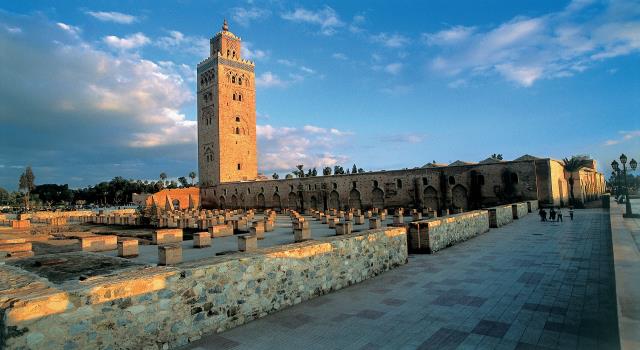
The Koutoubia Mosque is one of the most deeply rooted Islamic monuments in the history of Morocco and an exceptional architectural monument of the city of Marrakesh, having preserved its authenticity from the 12th century to the present day.
The first mosque of the Koutubia or “stone fortress” was built by the Almoravids in 1070, before being destroyed by the Almohads who wanted to hide any religious or cultural relics of the Almoravid state before taking Marrakesh as their capital.
The mosque was built by an Andalusian architect during the reign of the Almohad Caliph Abd Elmoumen in 1147. The minaret was built at the same time as the Hassan Mosque in Rabat and the Giralda in Seville. This mosque was designed according to Andalusian architecture by incorporating Islamic decorations, which made it a unique architectural masterpiece, as confirmed by several historical figures including the traveler Ibn Battouta who stated: “This mosque is unique in the Islamic world”.
The mosque, which covers an area of 5300 square meters, includes a prayer room, 17 pavilions, 11 carved domes, as well as columns and arches, was built in brick and sandstone. Its minaret is made of porcelain and turquoise. The minbar, one of the masterpieces of Islamic carpentry, is made of red sandalwood, oud and gold and silver leaf. It was made in Córdoba, Andalusia. It is equipped with an automatic movement system. Its parts are removable.
The Koutoubia Mosque, which is located near the famous Jemaa Lafna Square in Marrakech, owes its name to the square where booksellers and calligraphers gathered and where several major historical events and allegiances to many kings and leaders of Morocco have taken place.

Be the first to comment